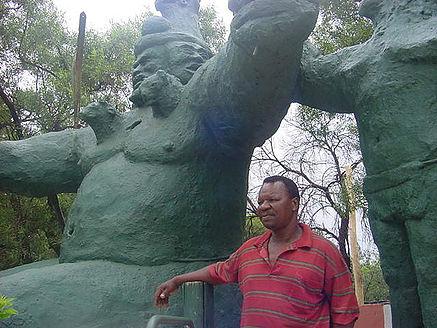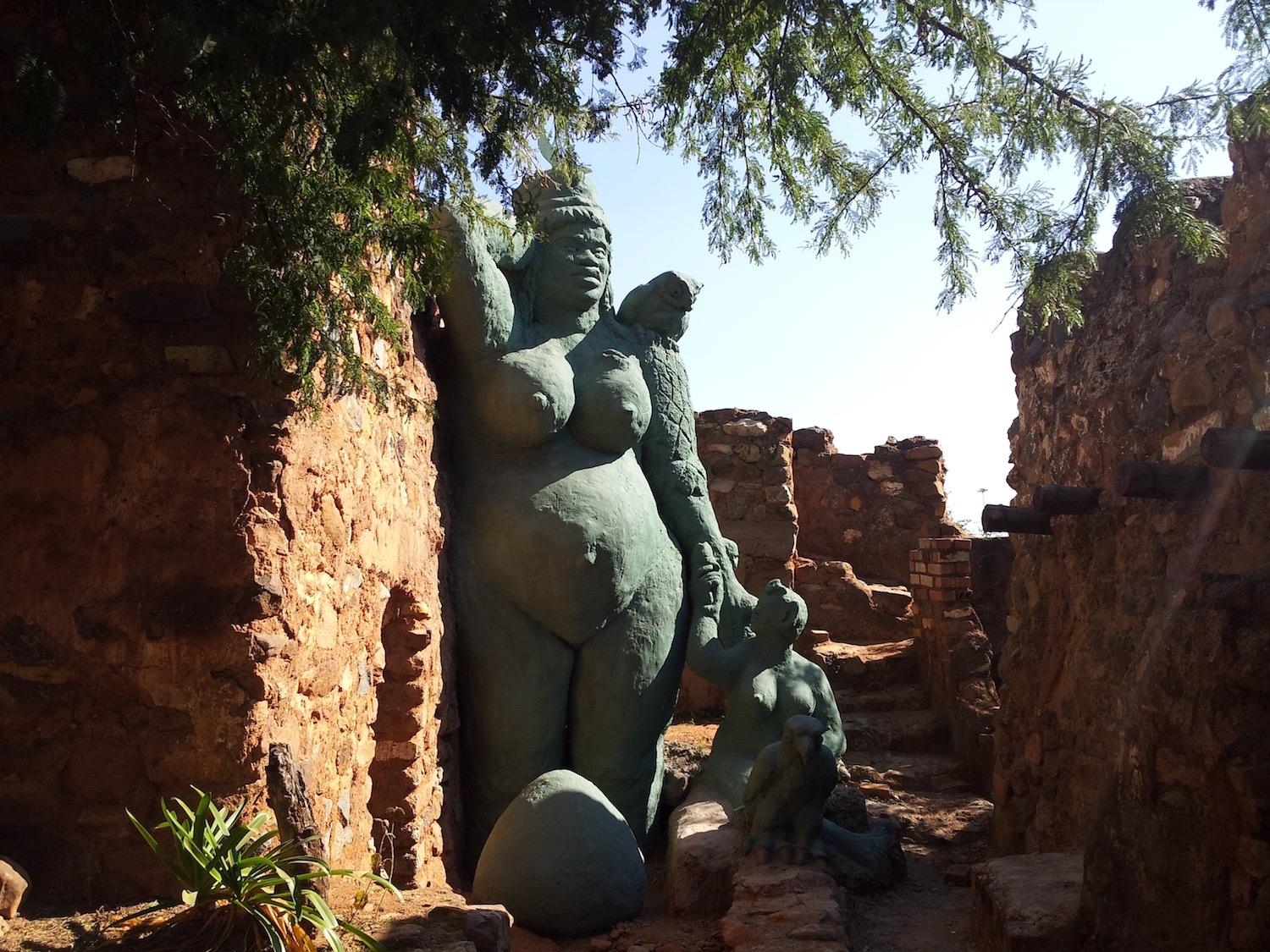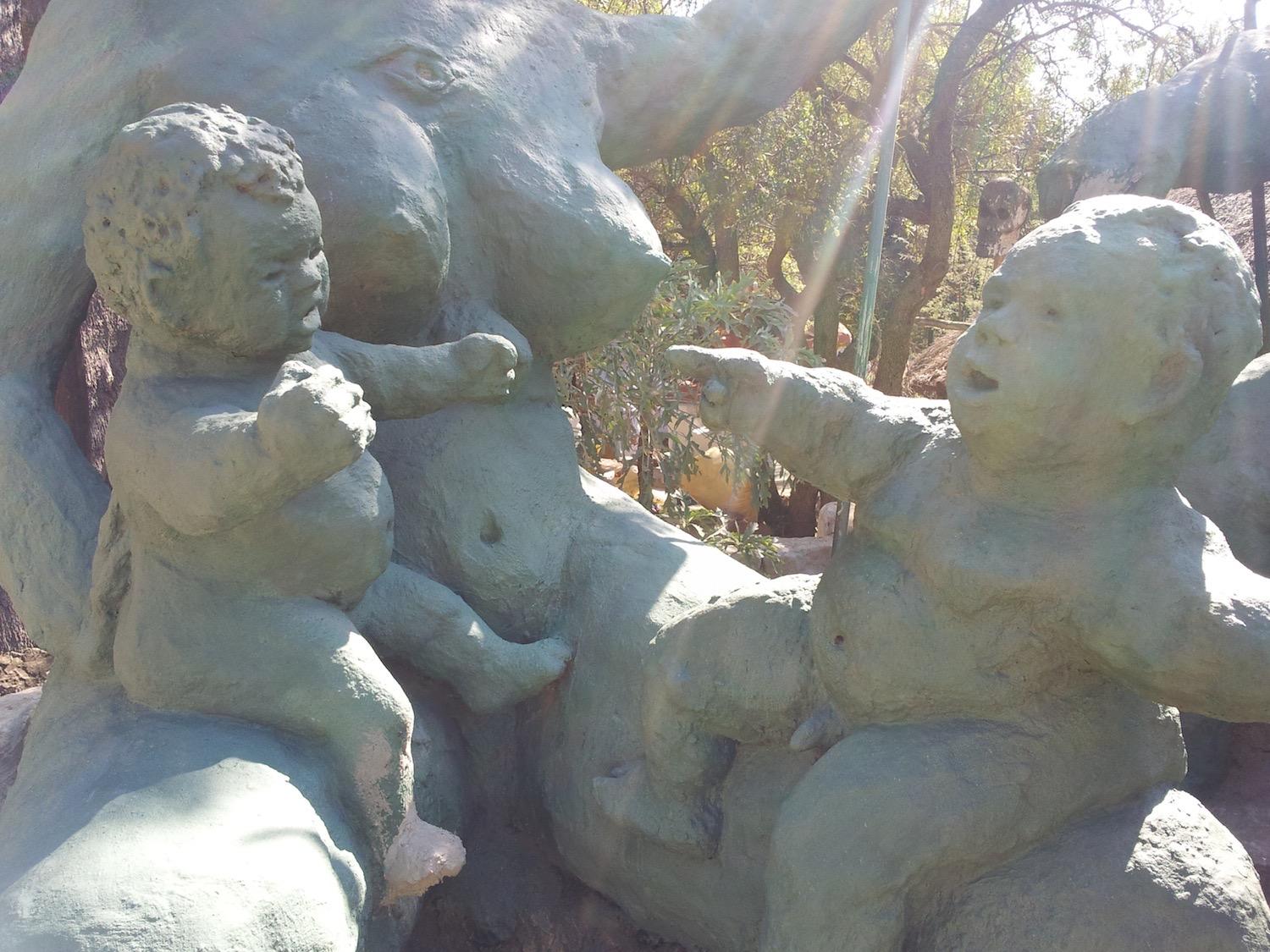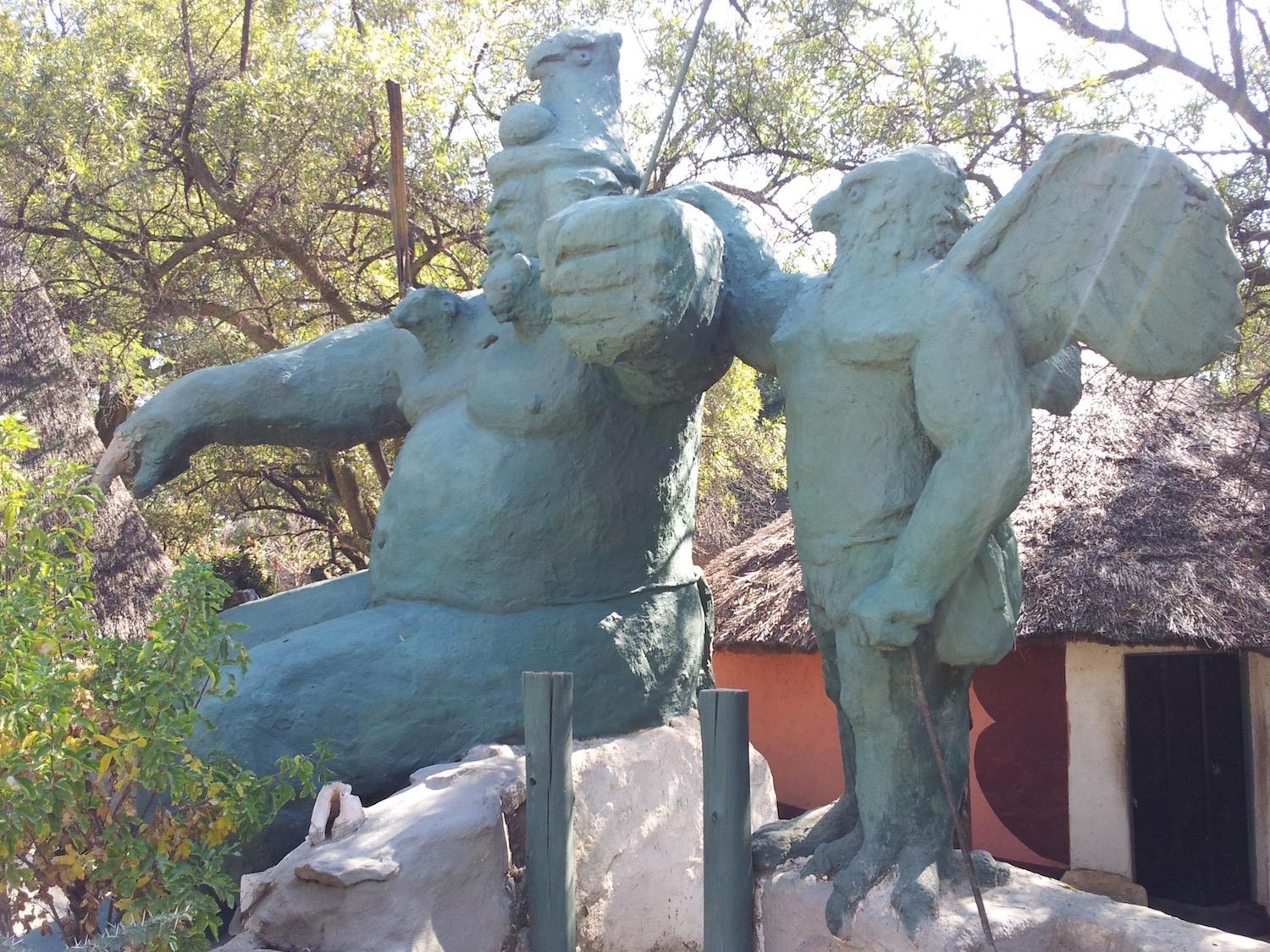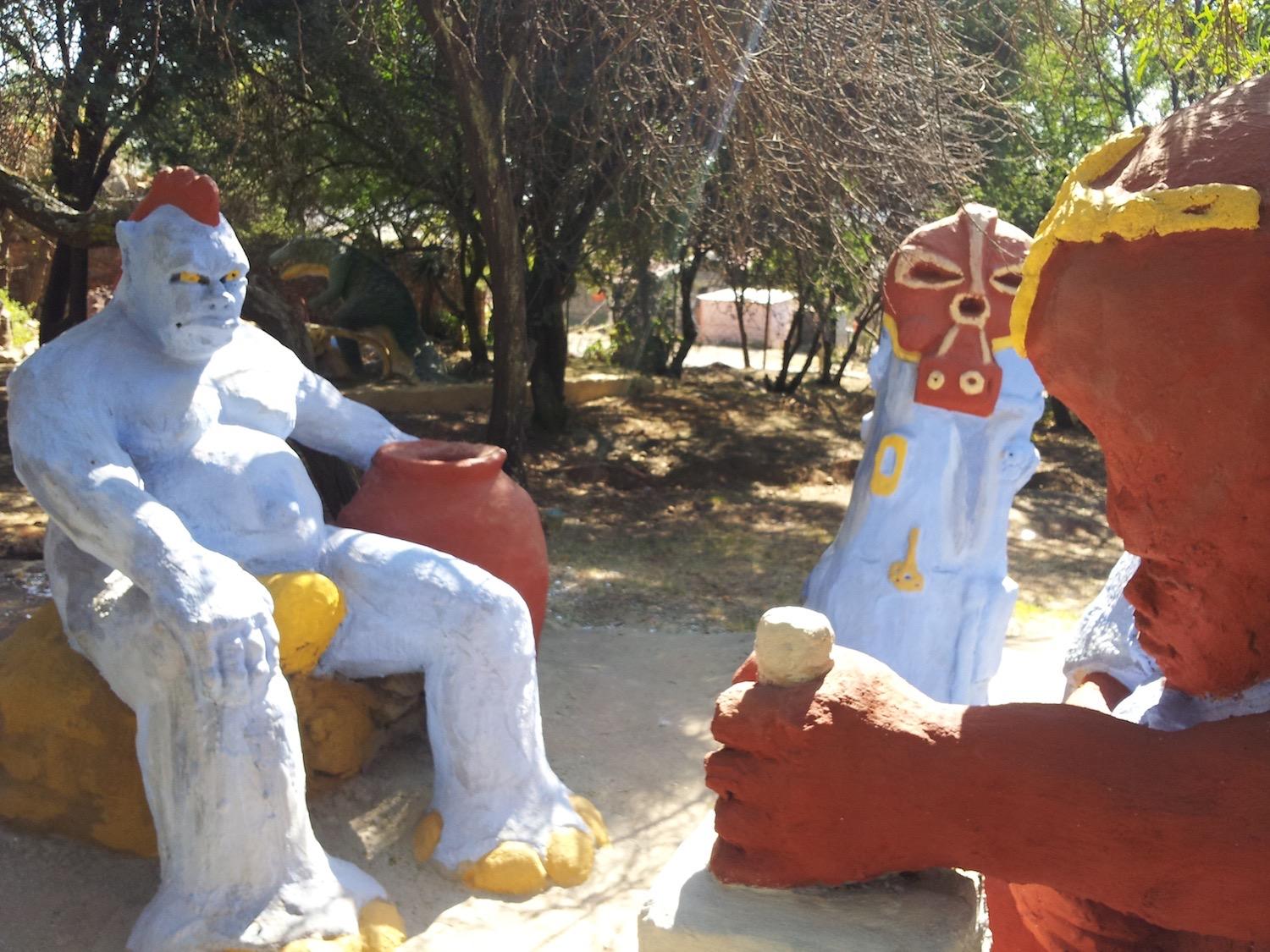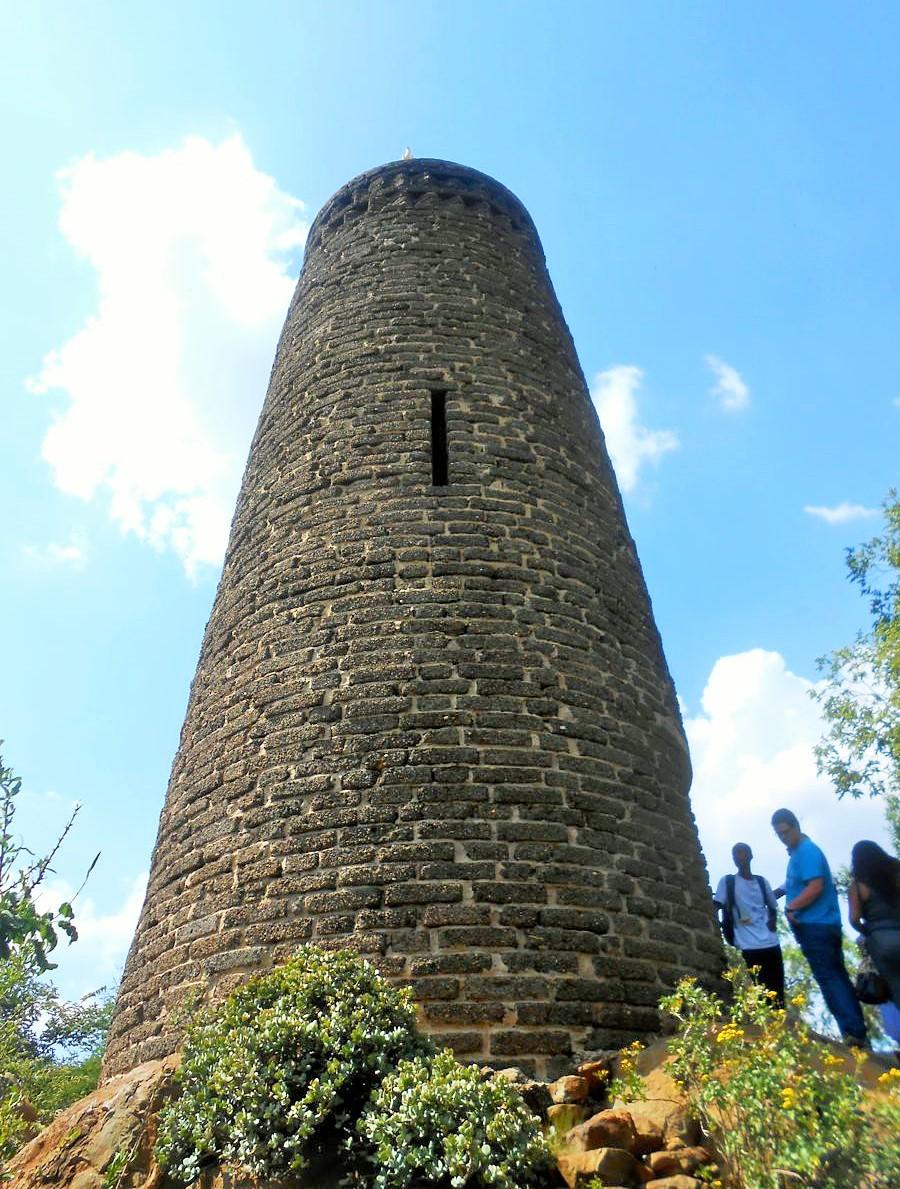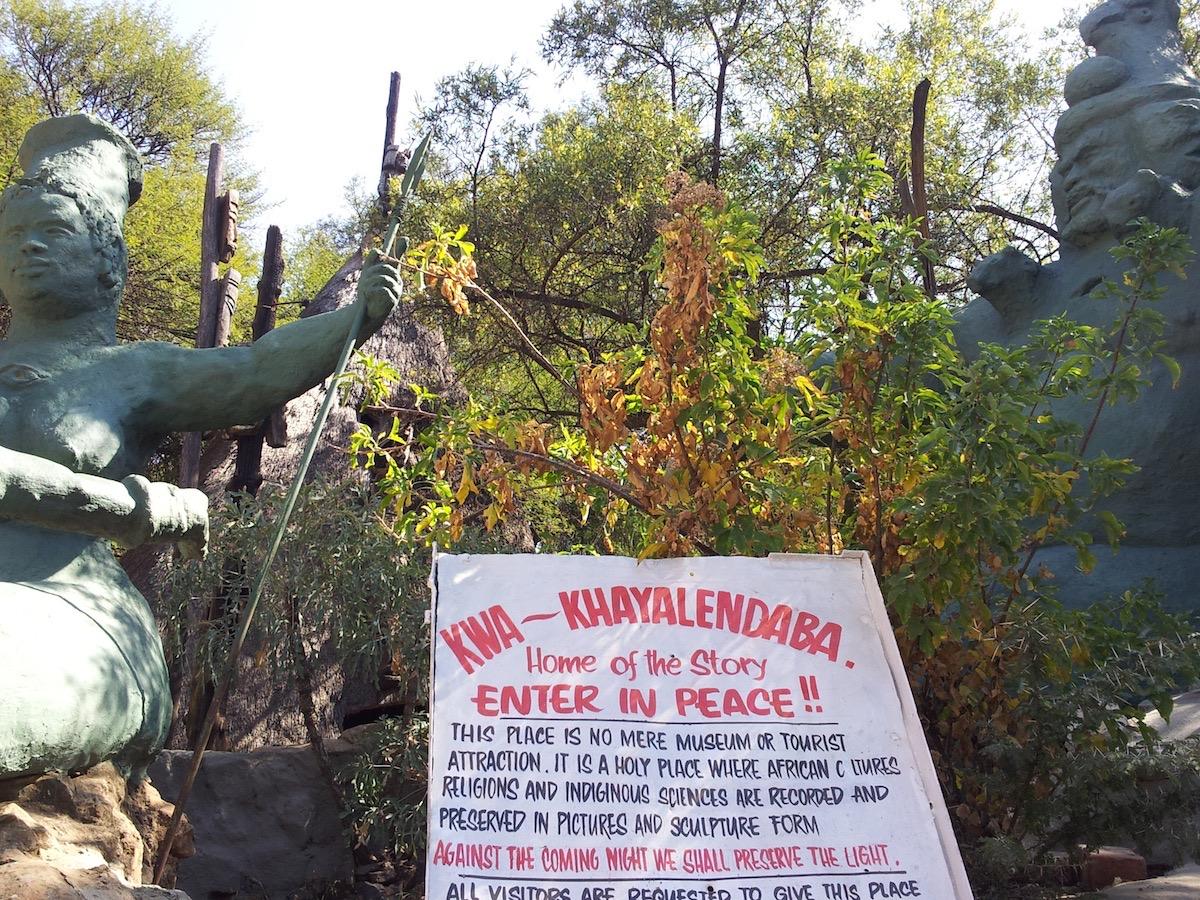
Disclaimer: Any views expressed by individuals and organisations are their own and do not in any way represent the views of The Heritage Portal. If you find any mistakes or historical inaccuracies, please contact the editor.
In the article below, journalist Lucille Davie describes the restoration of the Credo Mutwa Cultural Village in 2006. The article was first published on the City of Joburg's website on 27 January 2007. Click here to view more of Lucille's work.
The first phase of the restoration of the Credo Mutwa Cultural Village in Soweto is almost complete, with the mythical figures coming alive again with the help of one of the original builders.
The City has managed to trace Musa Ntanzi, the person who was second in command to Mutwa during the construction of the village in the 1970s and 80s.
Musa Ntunzi at the Credo Mutwa Cultural Village (Lucille Davie)
The village, consisting of symbolic clay sculptures and buildings on a site of several hectares in Central Western Jabavu, was created by artist, author and traditional healer Mutwa in 1974 and left incomplete when he vacated the site in 1986. Now in his 80s, Mutwa is still alive and still practises as a sangoma.
The large sculptures of human and animal figures depict African culture and folklore, together with a number of thatched huts, constructed in a variety of African building styles. After many years of neglect, the figures had chipped noses and hands, and peeling paint gave them a ragged look. The huts have lost their thatched roofs.
During the 1976 riots in Soweto, some of the structures were damaged.
Ntanzi was a successful 20-year-old artist back in 1978 when he was invited by Mutwa to join the project. Ntanzi was allowed to construct some of the structures on his own, making them his own creations – they now bear his name.
Scenes from the Credo Mutwa Cultural Village (The Heritage Portal)
Different areas
The site consists of a number of different areas, the central one containing the oversize figures of Nkulu Nkulu, God the father and the chief of creation, and Nokhubuwana, God the mother, and three smaller figures. Alongside Nkulu Nkulu, who has four faces representing an African, a San, a chinaman and a European, is the figure of Umvelingangi, sun god of Africa, with a striking eagle face.
These figures have now been restored, and painted a uniform jade colour, standing straight and tall against the sky, with fearsome expressions.
They are encircled in a one-metre high wall, the entrance of which is guarded by two busts – one of Shaka, the Zulu king, and the other chief Ngungunyani of the Tsonga. Both have been restored by Ntanzi, and their dramatic, whitewashed faces stare forcefully ahead.
The western section of the site contains a number of thatched huts used for healing, as well as several graves, three alien figures and a small dinosaur park. There is also a North African Islamic area on this side of the site.
The eastern section contains a queen’s hut, a king’s hut, a sangoma’s hut and a cattle kraal.
Ntanzi says the original structures in the central area were constructed of rubble and cement. He has removed the rubble, replacing it with chicken wire and a cement mix. Once dry, he and his workmen painted the sculptures.
Nkulu Nkulu, God the father and the chief of creation (The Heritage Portal)
Tokoloshe
Ntanzi has just completed the tokoloshe, positioned on the outside of the circular wall. It was a structure that he worked on 20 years ago, but never finished. Now he looks at it with a sense of satisfaction, its full, round face looking skywards, not the fearful figure often portrayed in African culture.
When asked, Ntanzi explains that there are good and bad tokoloshes. “There are different stories that are amazing,” he says.
Witches use tokoloshes for bad purposes, he adds, recounting how he witnessed his brother one day running swiftly to take a tokoloshe some maas or sour milk. “You wouldn’t have caught him, he ran so fast.”
Ntanzi tells stories about the figures he has worked on – they clearly have great significance for him, and he is fascinated by their mythology and meaning, comparing them to other religions and their iconography, which he describes in great detail.
Irene Mafune, project manager for the village, and Mighta Makhutle, cultural officer at the site, both claim that the similarities between Mutwa and Ntanzi are uncanny. “He is like a reborn Credo,” says Mafune, adding that Ntanzi even talks in the same manner as Mutwa. Ntanzi last worked with Mutwa around 20 years ago.
The architect working on the site, Jonathan Stone, describes Ntanzi as a “disciple” of Mutwa, adding that it appears they had a “master-disciple relationship”.
Survey and restoration
Last year an architectural survey of the site was undertaken, using original photographs taken by Gilbert Briscoe, manager of parks at the time.
Work on the restoration of the village started in October. Phase two is expected to begin towards the end of 2006. So far R300 000 has been spent on restoration, and a further R600 000 has been approved for phase two.
The original project was never finished, says Ntanzi. He accompanied Mutwa to Mafekeng to start a new village, also incomplete.
Stone says the site is likely to remain incomplete, even once restoration is finished.
”There is a view that the proposed restoration will be an opportunity to complete “incomplete” work or to pursue an ongoing artistic vision for the site. This is not consistent with restoration and using the results of this survey the parameters for the proposed work will need to be firmly established.”
Two interviews were conducted with Mutwa on site in June last year, in which he explained the significance of the buildings and sculptures.
Although the site is not a declared heritage site, Stone says that the site is being “treated as a proclaimed heritage site”, with careful attention to detail and a desire to “not want to improve things”, but simply restore the site to its original unfinished form.
More sculptures from the Credo Mutwa Cultural Village (The Heritage Portal)
Tower and gardens
Also on the site is the Oppenheimer Tower, built from bricks from demolished houses belonging to people who were moved to Moroka from newly declared white areas closer to the city.
Oppenheimer Tower (The Heritage Portal)
The gardens beyond the Credo Mutwa area are planted with traditional African medicinal plants, like several varieties of aloe, a cabbage tree, a wild olive tree, plumbago, a canary creeper, a coral tree, Cape honeysuckle, and a number of thorn bushes.
Makhutle says there are a number of sangomas who live near to the village, and they often come and collect herbs from the gardens for use in their practices.
Mutwa, originally from KwaZulu-Natal, now lives in Kuruman in the Northern Cape. He lived in Diepkloof in Soweto in the 70s when he worked on the village. He used to work as a sangoma from his home.
Ntanzi says he is building a cultural village in Orange Farm, where he lives.
Lucille Davie has for many years written about Jozi people and places, as well as the city's history and heritage. Take a look at lucilledavie.co.za
Comments will load below. If for any reason none appear click here for some troubleshooting tips. If you would like to post a comment and need instructions click here.

